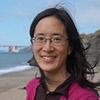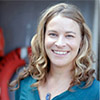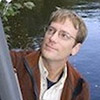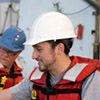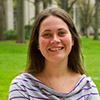 |
|
| SEARCH | GEOTRACES | |||||||||||||||||||||||||||||||||||||||||||||||||||||
|

Using rigorous methods to ensure measurements are both accurate and consistently collected, the GEOTRACES program has mapped the large-scale distribution of trace elements (such as iron, lead, zinc, and cobalt) across the world’s oceans. Funded by the National Science Foundation's Chemical Oceanography Program, the four-part GEOTRACES webinar series focused on several trace elements and what they can tell us about biogeochemical processes, the carbon cycle, and climate. Nine scientists, each studying a unique facet of the ocean’s chemistry, shared their work and the importance of researching these rare and vital “clues” from the ocean.
Thursday, April 30, 2015 7:00 pm ET / 4:00 pm PT Why do we care about trace metals in the ocean? How do we determine and understand their distribution? The opening to the GEOTRACES webinar series, this session invites you in to the world of trace metals and provides a broad look at how these elements are used to understand the ocean's past, present and future. Ben Twining - Director of Research and Education, Bigelow Laboratory for Ocean Sciences.
Tuesday, May 5, 2015 2:00 pm ET / 11:00 am PT How do key micronutrients get to the middle of the ocean? Why should (or shouldn't) we fertilize the ocean? Nutrients are vital to productivity in the oceans, but can be hard to come by, creating an environment poised to "bloom" if the right ingredients are available. This webinar follows the path of nutrients critical to phytoplankton growth and explores the question of how that relationship may (or may not) hold a solution to combat climate change. Kathy Barbeau - Professor, Geosciences Research Division, Scripps Institution of Oceanography.
Thursday, May 7, 2015 7:00 pm ET / 4:00 pm PT What are oxygen minimum zones? How might they affect life? When we think of the shoreline, we think of the beach, but researchers investigate shelf and "near shore" processes miles out into the ocean. This webinar focuses on the role of trace metals in creating oxygen minimum zones. These zones can be created naturally but can also be heavily influenced by human activities, including pollution. Carl Lamborg - Assistant Professor, PBSci-Ocean Sciences Department, Institute of Marine Sciences, University of California, Santa Cruz.
Tuesday, May 12, 2015 7:00 pm ET / 4:00 pm PT How are hydrothermal vent fluids created and how do they move through the ocean? Trace metals , such as iron, can travel through the earth's crust and spew into the ocean in gigantic "megaplumes" from hydrothermal vents. These elements are utilized close to the vent sites by organisms at the sea floor who do not require light - but may also be carried for miles away from the vents. This webinar investigates the journey of iron around the globe. Jessica Fitzsimmons - Assistant Professor, Oceanography Department, Texas A&M University. |
|||||||||||||||||||||||||||||||||||||||||||||||||||||
|
|||||||


